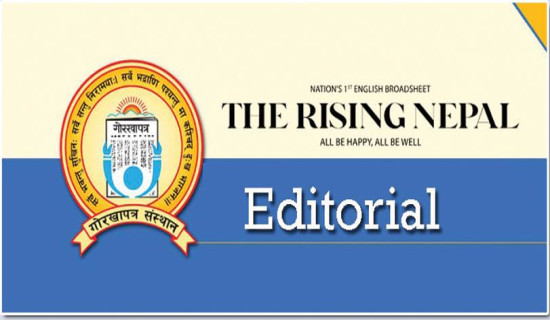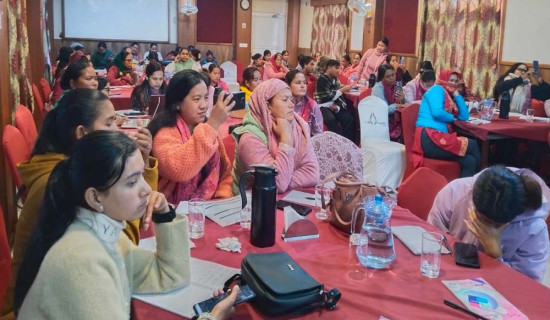- Wednesday, 24 December 2025
Dry Season Power Crunch
Once there was a time when Nepali people were facing a crippling power outage of up to 16 hours a day during the dry season. The load-shedding that affected both the household and industry sector for a decade became a history from the year 2016 when a professional management team at the Nepal Electricity Authority did a miracle in power supply management. The dedicated management team upgraded the country from the age of darkness to light through internal power management, reduction in leakage and notable improvement in power supply system. The increased power import by NEA from India, mostly during the dry season, was also one of the important complements for ending the regular power outages in the country.
Although a significant progress has been made in power generation after the end of load- shedding, the country is still relying on imported power to meet its power deficit mostly during the dry season. The increased demand of power in the domestic market and the lack of reservoir-based power generation plants are resulting in a huge power deficit during the dry season. Due to the run-of-river type nature of most of the hydropower projects, the power generation of the country decreases to less than half of total installed capacity during the dry season when water levels deplete in the rivers. According to a news report published in this daily on Thursday, the NEA is compelled to impose load shedding in industries with the reduction in electricity generation within the country and similar energy dearth in India. The power supplier has not been able to supply electricity to the industries round the clock for three days as India could not supply the required electricity to Nepal.
Currently, around 900 MW electricity is being produced in the country whereas the internal demand of the power is around 1500 MW to 1,600 MW. To meet this power shortage, the NEA is importing up to 300 MW electricity from Indian power exchange market, but it has not been sufficient. Inability of India to supply enough electricity to Nepal was due to decline in power supply for rising coal price in the international market following the Ukraine war in contrary to rising demand. Nepal has been buying electricity from three channels, Indian Energy Exchange (IEX), the state of Bihar and Power Trade Corporation. Currently, due to energy crisis, many Indian states are facing scheduled power outages. The NEA has also started load-shedding in industries by giving prior notice. The power cut in industries is expected to continue for 10 to 15 days. The regular power outage at the time when the price of petroleum is skyrocketing is sure to increase the cost of production and limit the production capacity of many industries.
The dry season load-shedding in the industrial sector is something that calls for credible plan and strategy on the part of the NEA and the government to manage a reliable source of energy to meet the power deficit during the dry season. Import of energy from India could not be a reliable source to meet the deficit as India itself is passing through energy crisis. For this, the country should develop some reservoir-based projects including Budhi Gandaki Hydropower Project at the earliest. Such storage-based project can be operated during the dry season in order to meet the power shortfall caused by the depletion of water levels in the rivers.

















